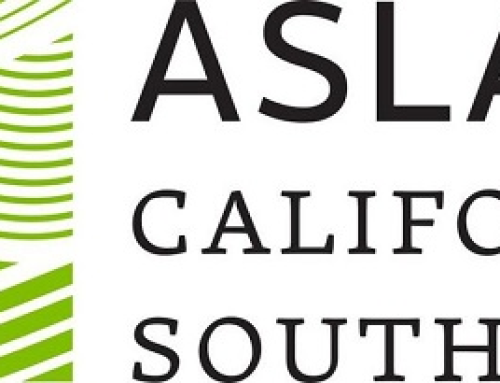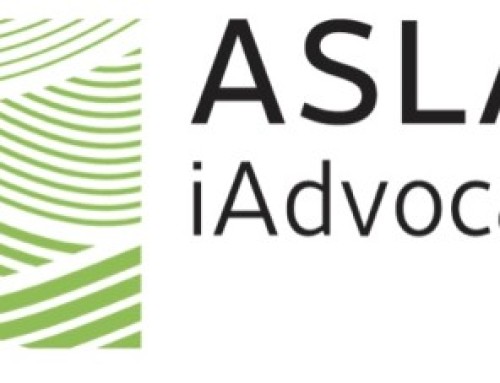On March 5, 2019 the Senate Committee on Business, Professions and Economic Development and Assembly Committee on Business and Professions held their joint sunset review oversight hearing for CAB and LATC. Members from CAB and LATC addressed the Committee, lead by Senator Steven Glazer & Assemblymember Evan Low, while John Nicolaus and I represented the four chapters that comprise CCASLA and gave support for our continued professional licensure during the public comment period. During the testimony a few of the Committee members had questions for CAB on ADA compliance and unlicensed practitioners, thankfully there were no questions specifically directed to LATC.
There were current unresolved sunset review issues pertaining to the LATC, new issues not previously addressed by the Committee, some new specific issues raised by the LATC, and a few other areas of interest for the Committees to consider. At the hearing the committee staff made several recommendations regarding various issues as noted below.
ISSUE #1: LATC has only professional committee members.
Background: DCA boards are comprised of a mix of professional and public members so that consumers’ interests are represented in the regulation of professional licensing. In contrast, LATC has only professional members. However, LATC exists as a committee of the Board, which itself is comprised of public and professional members, who ultimately vote on LATC proposals. While the Committee has not raised any consumer-related issues with respect to this structure, the Committee may wish to consider whether adding consumers could be beneficial to their discussions.
Staff Recommendation: The Committee may wish to discuss whether adding consumers to its membership would be a benefit.
ISSUE #2: The “written contract requirement” provisions of law need updating.
Background: The Committee indicates that its “written contact requirement” is one of its most important consumer protection tools. Current law requires a landscape architect’s written contract to:
1. Describe the services to be provided by the landscape architect to the client;
2. Describe the basis of compensation, including total cost and method of payment;
3. Include a notice that reads, “Landscape architects are licensed by the State of California”;
4. Identify by name and address the client and the landscape architect, including the landscape architect’s license number;
5. Describe the procedure to accommodate additional services; and
6. Describe the procedure to be used by both parties to terminate the contract.
The Board has investigated many consumer complaints related to contracts, and LATC’s experts in the Enforcement Program have identified several potential improvements to the current law.
Many of the disputes stemmed from misunderstandings of the project description and/or failure to manage changes in the project description during the design process. The description of the project has direct bearing on the design services required, compensation related to those services, and the project budget and schedule. Without a defined project description, it is often unclear whether the project is on track to meet expectations and project requirements established by the client and the architect.
According to the Rules of Professional Conduct, landscape architects are prohibited from materially altering the scope or objective of a project without first fully informing the client and obtaining the client’s consent in writing. However, landscape architects are not currently required to define the project description in their written contracts. Therefore, it can be difficult for the client or landscape architect to determine when the project description has been materially altered if it has not first been defined and agreed upon in the written contract.
The LATC Board has also received complaints and questions from consumers regarding the ownership and use of an architect’s instruments of service. Current law prohibits the use of an architect’s instruments of service without the consent of the architect in a written contract, written agreement, or written license specifically authorizing that use. However, architects are not currently required to include a provision addressing the ownership and use of their instruments of service in their written contracts with clients. Therefore, clients are often unaware of each party’s rights with respect to the architect’s instruments of service.
The LATC is proposing to clarify current law to include the following elements in landscape architects’ written contracts:
1. A description of the project for which the client is seeking services;
2. The project address;
3. A description of the procedure that the landscape architect and the client will use to accommodate contract changes, including, but not limited to, changes in the description of the project, in the description of the services, or in the description of the compensation and method of payment; and
4. A statement identifying the ownership and use of instruments of service prepared by the landscape architect.
5. A clarification that landscape architects are licensed by LATC.
The LATC expects this proposal to benefit consumers and landscape architects by providing enhanced transparency for contracted parties, thereby reducing the number of disputes related to project description disagreements, unauthorized changes made to the project during the design process, and/or the ownership and use of instruments of service.
Staff Recommendation: Amend the law as proposed by the LATC.
ISSUE #3: The California Architects Board (CAB) and the Committee designate different duties to the EO.
Background: Currently, CAB allows the EO to approve settlement agreements for revocation or surrender of a license. The Committee, however, does not, which requires a licensee surrendering a license to appear before the Board at one of its quarterly meetings. Aligning the EO duties for both regulating entities would streamline discipline and conform with the LATC’s strategic objective to align its practices with the Board.
Staff Recommendation: Adopt language approved by the Committee to allow the EO to approve settlement agreements for revocation or surrender of a license.
ISSUE #4. (CONTINUED REGULATION BY THE LATC) Should the licensing and regulation of landscape architects be continued by the Committee, through the CAB?
Background: Clients and the public are best protected by strong regulatory boards with oversight of licensed professions. LATC has proven to be a competent steward of the landscape architect profession and should be continued with a four-year extension of its sunset date.
Staff Recommendation: The licensing and regulation of landscape architects should continue to be regulated by the Committee, and it should be reviewed again in four years.
So, what does all this above mean to you/us? The recommendation that a public member will be added to LATC (#1), as well as two more recommendations that come from LATC which will find their way into the sunset extension bill (#2 and #3). It’s CCASLA’s opinion that these recommendations don’t seem objectionable to our professional practice or our licensure. Simply put, our licensure is safe for four more years.
Finally, we couldn’t have done it without the tremendous support from EGRS our lobbyist firm. They have been involved in all our CCASLA meetings as well as extensive interaction between CAB and LATC and are vigilantly tracking bills that may have any potential effect on our profession.
There’s more to come for 2019, stay tuned!






